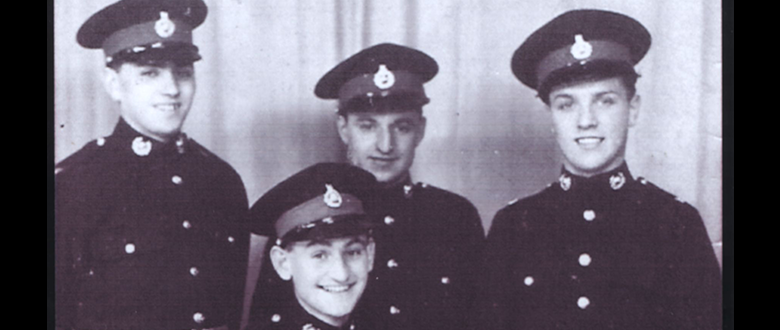The experience of a 19 year old Landing Craft Coxwain
Today is the seventy-second anniversary of Operation Neptune. It was the largest amphibious assault, the largest Royal Marine operation of the war and signalled the opening of the northwest European front.
By any stretch of the imagination it was, and still is a massive event. There were something like 160,000 allied personnel involved, of whom 16,000 were Royal Marines. If you think the scale of the event and what it signalled about the Second World War were massive, then spare a thought for the individuals who were actually there and how significant it was for them…
Many people will write many things about D Day today, some will insightful and well thought out. Many of them will invoke images of beaches and smoke and something reminiscent of a certain film starring Tom Hanks.
I’m going to wind the story back a little further than that. Before the Commandos and all the other troops could run up the beaches, they had to get there. More than that, someone had to get them there.
Over half of the Royal Navy landing craft were crewed by Royal Marines. Allow me to introduce you to a chap called Sergeant Drew:
I was 19, a Royal Marine, and Coxswain of a landing craft (LCVP) approaching the D Day beaches of Normandy.
Sgt Drew RM LCVP 1013
Think about that for a moment: he’s 19 years old, probably has never left Britain before and he is tasked with delivering a boat full of soldiers safely onto Juno Beach to take part in D Day. He has to make sure that the landing craft and all its passengers arrive in the right place in one piece. Just imagine the pressure.
So how did he feel?
Full of apprehension, fear of the unknown and the many discomforts associated with a small craft crossing the channel…
That pretty much sums it up to be honest. In case he wasn’t afraid enough, he drops this little bombshell too:
The losses were expected to be so heavy that in the next few days a spare crew arrived for each craft.
That’s right: they were so confident that the crew were going to get killed that they had a spare crew for each craft. The craft were needed to outlive the crew and still be useful. If you weren’t afraid before, you would be now.
The Landing Craft Vehicle Personnel was a little over 36 feet long by 10 feet across with a draft of between 2 and 3 feet. It had a crew of 4 and carried up to 36 troops. It was capable of 12 knots (just under 14mph). Sergeant Drew coxed this craft across the channel in darkness and rough waters.
we had been issued with chewing gum to prevent seasickness, but with the rough seas and our craft being flat bottomed, the continuous buffeting made a lot of the troops and some of the crews seasick.
Just imagine how miserable that crossing probably was for the Coxwain.
Then, as dawn broke:
As we approached the beach we saw the whole coast ablaze and I thought “My God, we’ll never get in there alive.”
Not only Was he expected to do it, but he was expected to do it several times. The dangers facing in incoming landing craft were many: the rough surf, mines, underwater obstacles and fire from defending forces. In fact Drew describes this chilling moment:
At one point I said goodbye to the crew, for on the starboard side was a huge mine and I was sure we would hit it.
Imagine realising that you are about to hit a mine and what you would do about it. His diary doesn’t record exactly what happened but the fact we have his diary means they must have avoided it.
Sadly, their luck didn’t last:
We were hit amidships by a torpedo and literally blown out of the water. We had gone through hell for days and nights, Stukka Bombers, Coastal batteries…the lot. It was a terrible experience and one that I will never forget as long as I live.
LVCP (or in some cases LCA) 1013 is listed as having been lost during the operation.
So, when you’re thinking about the undoubted bravery of the troops on the beaches on D Day, spare a thought for those who put themselves in harm’s way to get them there in the first place.

